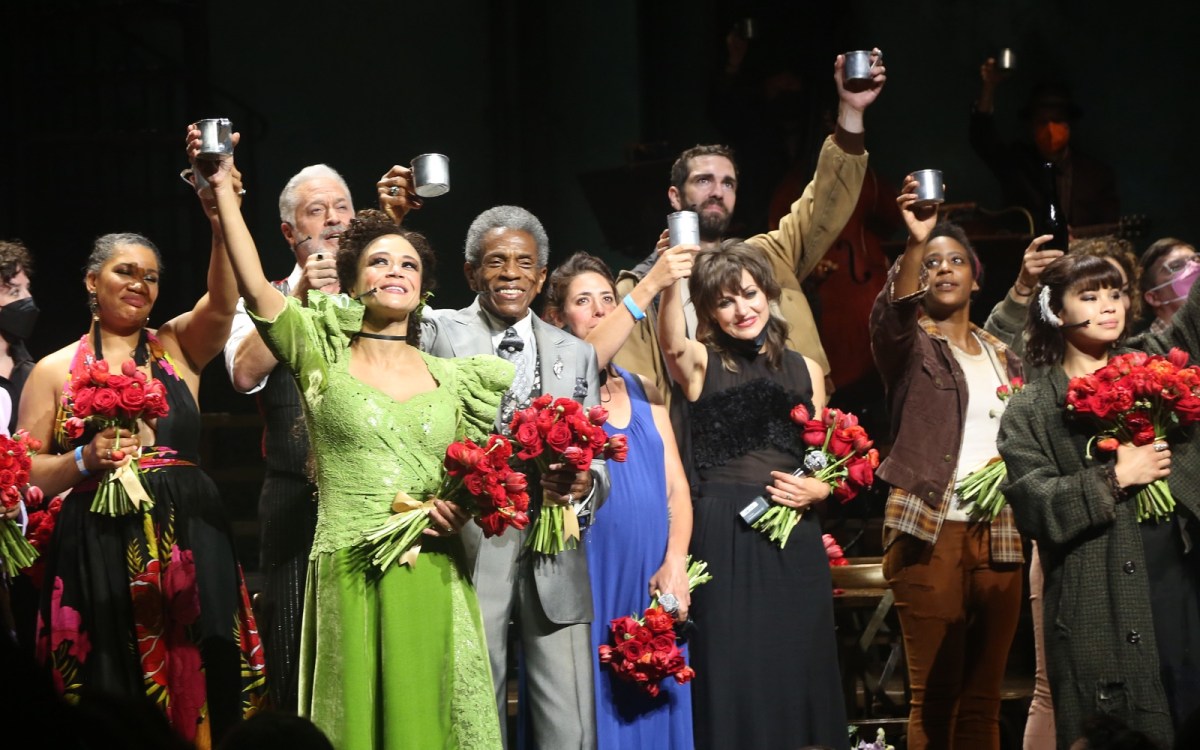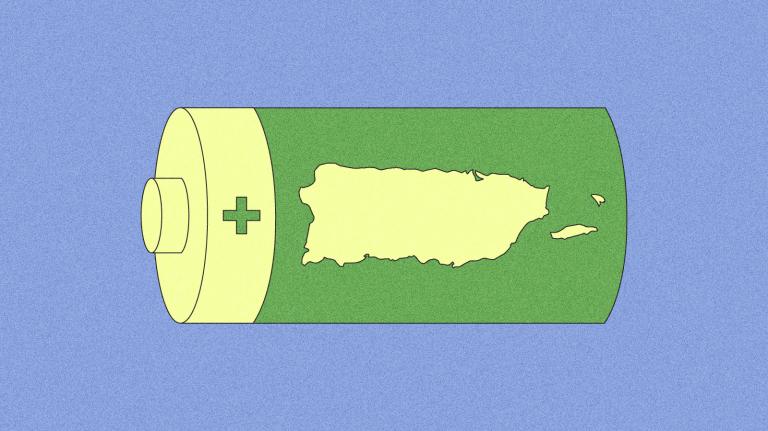
The vision
“You can locate the ways that climate and sustainability intersect with any good stories, without explicitly telling a climate change story. Because it frankly intersects with nearly every story.”
Cyle Zezo, executive producer
The spotlight
Last September, cozied up in a hotel room at my very first journalism conference, I watched the Netflix original movie Do Revenge. I love a good over-the-top high school dramedy — especially one with outfits to rival Clueless. But the moment that made my eyes widen the most wasn’t a wardrobe choice, a plot twist, or a reveal. It was about 20 minutes into the movie, when one of the main characters stood watching a group of her fellow students, later referred to as “the Greta Thunberg brigade,” stage a climate protest on their high school campus.
It was just a passing mention. Any number of other social issues could easily have replaced climate change in the script. But they chose to evoke our planetary crisis — and they’re not the only ones. Catching up on the Netflix series Ginny & Georgia, I took notice of a teenage character citing “global warming” as a reason for his depression. And in HBO’s Mindy Kaling-helmed The Sex Lives of College Girls, I nearly leapt out of my seat when season 2 debuted a sexy climate refugee character.
These were all subtle moments in the course of the rest of the drama, but they rang authentic. Teenagers have been protesting climate inaction, in massive numbers, for years now. And even the passing mentions reflect a reality that climate change is present in young people’s minds — along with the name Greta Thunberg (although Do Revenge did, unfortunately, mispronounce it).
![]()
These subtle mentions also reflect an intentional push for TV and films to capture this reality. “Of course, we do need new stories like Extrapolations and How to Blow Up a Pipeline where climate is the central focus,” says Anna Jane Joyner, the founder and CEO of Good Energy, a climate storytelling consultancy. “But we also just need to see it acknowledged in any kind of story.”
Fewer than 3 percent of film and TV scripts from 2016 to 2020 included any climate-related terms, according to an analysis by Good Energy and the Norman Lear Center’s Media Impact Project. It’s Good Energy’s mission to change that. Last year, the organization released a playbook for screenwriters, industry executives, and other creatives who want to explore ways of weaving climate themes into their projects — from soap operas to thrillers to rom coms.
“We’re not talking about a new kind of genre or story. We’re just talking about writing about what it feels like to be alive right now,” says Joyner. “And that includes living in a world where there’s a climate crisis.”
Climate placement
During this year’s Super Bowl, Netflix ran an ad announcing that the streaming service will partner with General Motors to feature more electric vehicles in its productions, including the popular reality shows Queer Eye and Love is Blind. That’s an example of what Good Energy would call “climate placement” — the EVs won’t necessarily be a topic of discussion on screen, but showing people, especially beloved characters or TV personalities, exhibiting climate-friendly behaviors can help to normalize them.
“It doesn’t necessarily need to be the ‘A’ story,” says Cyle Zezo, an executive producer specializing in non-scripted content (reality TV, documentaries, and game shows) and the former head of alternative programming at the CW Network. Zezo is now working on an initiative he’s calling Reality of Change, focusing on climate storytelling opportunities in non-scripted shows. He’ll be speaking about the idea at upcoming industry events and conferences, and is also on the board of advisors for this year’s Hollywood Climate Summit, which will feature a reality TV presence for the first time.
“I think non-scripted is such an obvious place to see this play out, because climate change is reality, and we’re talking about reality TV,” he says. In one example, Zezo worked on a cooking show called Recipe for Disaster that will debut on the CW later this year — “It’s this absurd but fun, family-friendly cooking competition show that has nothing to do with climate change,” he says. But without making it the main focus, the show’s format provided opportunities to feature climate-related challenges and plant-based cooking. Zezo says the producers also made sure to cut to shots of the compost bins on set.
“In the normal course of things, there are these elements you can incorporate that reflect where audiences already are and what they’re looking for,” he says.
The impact of climate on screen
While 64 percent of Americans report being worried about climate change, 67 percent also say they “rarely” or “never” discuss it with family and friends, according to research from the Yale Program on Climate Communication. “If we’re not talking about climate, if we’re not facing it, then we’re certainly not doing anything about it,” Joyner says. And one way of encouraging climate conversations is to show them on screen.
She notes how visibility in pop culture has contributed to progress on social issues like LGBTQ justice — President Biden has attributed the profound shift in opinion on marriage equality, including his own, to the show Will & Grace. Seeing a relatable character dealing with climate impacts or fears can help reassure viewers that they are not alone and that their climate concerns are valid, Joyner says. “Those are all really important psychological benefits of even just mentioning it.”
She adds that the climate movement is in some ways catching up to other industries, including Big Oil, that have long understood the importance of pop culture narratives. “The Department of Defense has had people in Hollywood for over a century, directly impacting the stories that are being told about the U.S. military,” Joyner points out. “How we think of World War II is not our history books, it’s the movies that we’ve seen. That is what shapes collective American consciousness around World War II.”
![]()
I spoke about this with Samuel Rubin, an impact producer and one of the founders of the Hollywood Climate Summit (and a 2022 Grist 50 honoree). In some of the examples I had come across in my casual viewing, he pointed out even more layers to the climate mentions than what I had initially clocked. In The Sex Lives of College Girls, for instance, he was excited to see the show challenging stereotypes.
The climate refugee character — a ripped, Midwestern blond boy — not only contributes to an awareness that climate disasters are displacing more people, but also challenges notions of what a refugee looks like. “Am I supposed to feel sad for a refugee, just because they lost everything?” Rubin joked. “Or can I actually be like, ‘Oh, I wanna fuck that refugee. He’s so hot.’”
He also pointed to the fact that a climate fundraiser organized by the main characters was depicted as a fun bonding moment on the show — another example of how these climate mentions can change our perceptions.
Rubin knows his work will take time to pay off. “I think people forget that making a movie takes literally three to five years,” he says. The shows and movies that have been greenlit in the past year may not hit screens until 2025 or 2026. Meanwhile, the industry is contending not just with an evolving understanding of climate, justice, and representation, but also with internal struggles, as the current Hollywood writers’ strike highlights. “It’ll take time, but it’s happening,” Rubin says.
“For audiences, we really are starting with a blank page,” Joyner says, “which is both maddening, because we’re behind, but also a really amazing opportunity because this is the moment that will shape our stories for decades to come. And those stories will shape our world for decades to come.”
— Claire Elise Thompson
More exposure
- Read: more about the Good Energy playbook and the need for relatable climate storylines (TIME)
- Read: more about the Hollywood writers’ strike (Today)
- Read: about climate messaging at the Eurovision Song Contest (Energy Monitor)
- Watch: Extrapolations (Apple TV) and How to Blow Up a Pipeline (available on Apple TV or Prime Video), if you haven’t already.
See for yourself
What’s your favorite example of a movie or TV show that handles climate themes in an interesting, funny, or thoughtful way? Next week, we’re planning to share a summer watch list, with some recommendations from the folks quoted above. Reply to this email to share your recs!
A parting shot
If the theatre is more your jam than TV, check out the soundtrack for Hadestown — a jazzy take on the myth of Orpheus and Eurydice with some undeniable climate themes. Here’s the Broadway cast celebrating their opening night (the flowers represent a major climate-related motif in the show).




